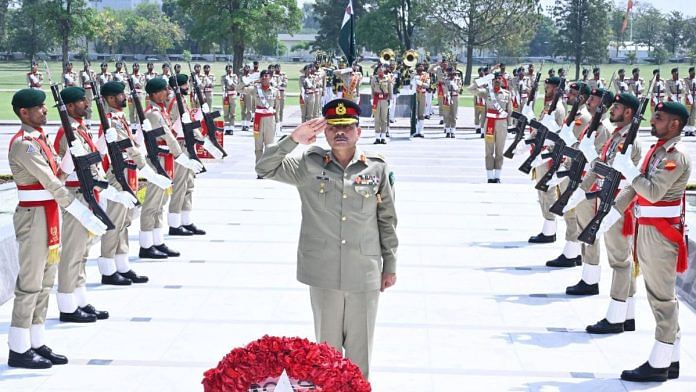India announced that its intention was to target terrorist infrastructure linked to various Pakistan-based groups – making it unclear what Asim Munir was defending exactly. Given that the campaign was entirely fought with aerial means, it is a mystery where Munir demonstrated military leadership, courage, and bravery. Since at no time was any ground incursion planned, launched, or announced, where did Pakistan’s territorial integrity come under threat from India? It’s certain, however, that the country’s sovereignty was violated by precision guided missiles.
The army’s role was minimal at best, because the military infrastructure damaged or destroyed almost exclusively comprises airbases. Images that highlight the damage are freely available. The simplest explanation lies in the surreptitious manner in which the sudden ceasefire was petitioned by Pakistan. The damages to various airbases were beyond the levels acceptable in a conflict – ultimately compelling Pakistan to enter ceasefire negotiations. There was, once again, no direct combat role for the Pakistan Army in all this. Where it did play a role was in the killing of Indian civilians.
Artillery fire across the Line of Control (LoC) led to numerous civilian deaths in India. While leads from the ghastly 22 April massacre at Pahalgam point to elements within the Pakistan Army, it is the trans-LoC firing that can be established with certainty. So, if that constitutes bravery, courage, and leadership for the political establishment in Pakistan, then the less said the better. It is clearly a case of civilians buying time from an ambitious army chief, and in fact earning an extension of their own.
With this largely token elevation as Field Marshal, General Asim Munir will be the first to occupy both appointments – an active-duty COAS as well as a five-star general. The only previous Field Marshal in Pakistan, General Ayub Khan, did not occupy both offices simultaneously, and had General Musa Khan as his army chief. Since then, Pakistan has not had a Field Marshal, despite spending decades under martial law and military dictators. It is, in fact, India that has had more five-star military leaders than Pakistan. But none with a penchant for manipulation like Pakistan’s newest icon.
It is, after all, his elevation to the status of an icon that enabled this manipulation of ranks—just as it had earlier given him a five-year tenure, extendable by another term. So, Pakistan’s Army Chief could well get a 10-year tenure in office, as well as a lifetime rank of Field Marshal, which is not bad for a healthy man under 60. This does not portend well for Pakistani politics. When precedence is a pointer, this is certain to end badly – for the simple reason that public aspirations and political dynamism are certain to clash with atomisation of power.
The euphoria around Field Marshal Munir’s atomisation of power is unlikely to last – for it never does – and will eventually run into the headwind of people’s mobilisation. Moreover, he doesn’t have the elan to carry his new rank to a higher level of imagery. Certainly not when compared to the three Indians who wore five stars. The flamboyance of Field Marshal ‘Sam Bahadur’ Manekshaw is unmatchable, especially given his outstanding leadership during the 1971 Bangladesh War. The quiet elegance and etiquette of Field Marshal Kodandera Madappa Cariappa is a rarity, as is the swagger of Arjan Singh, Marshal of the Air Force.
(Edited by Zoya Bhatti)








